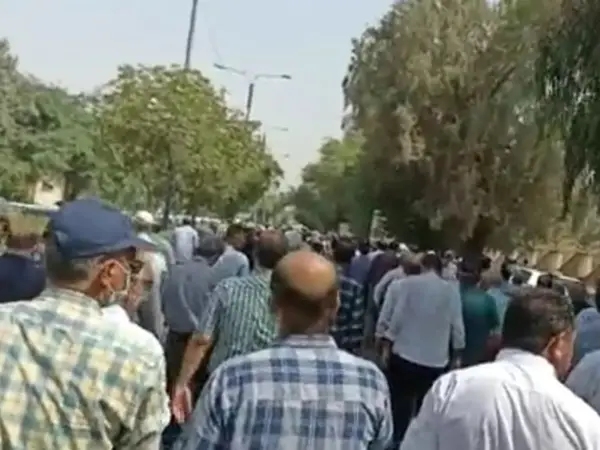Retirees in Iran have staged a second day of protests in many cities demanding an increase of pensions amid what they say is a 100 percent inflation rate.
Videos and reports published on social media show hundreds of retired protesters marching in Ahvaz, capital of the oil-rich Khuzestan province, in Ilam, Qazvin, the port of Bandar Abbas, Esfahan in central Iran, Mashhad in the northeast and other towns and cities.
Retirees who depend on monthly payments from the Social Security Organization say their pensions have increased at a much slower rate than current inflation and they simply cannot make ends meet.
In most cities protesters were chanting slogans against the government calling it a cheat and a liar. They also repeated the chant, “Death to Raisi” that has been ringing out in other protests since early May.
Just a few days ago the government announced that pensions for most retirees will increase by just 10 percent, while the official inflation rate is at least 40 percent.
At the same time videos show the bazaar in the northwestern city of Tabriz was on strike on Tuesday with merchants shutting down their stores and businesses in protest to a sudden increase in sales tax.
Bazaar or traditional retail market strikes have a deep historical root in Iran and signal a serios political and economic crisis. The bazaar strikes played a major role both in the Constitutional Revolution of the early 20th century and the 1979 revolution against the monarchy.
Tabriz was the scene of another remarkable event on Monday when a few hundred marching retirees reached a police cordon in a street, hesitated for a moment, and then kept on marching, breaking through the police lines. Security forces did not react as they were overwhelmed.
Since early May when the government of President Ebrahim Raisi stopped a food import subsidy and prices soared, Iran has witnessed protests and instability.
The subsidy started in 2018 when former President Donald Trump pulled out of the 2015 nuclear agreement and began imposing tough sanctions on Iran. Two months before his decision, the Iranian currency had already begun to fall against the US dollar making imported food and other necessities more expensive for consumers. The government decided to provide import subsidies to prevent political discontent, but it eventually decided that the scheme was too expensive and scrapped it.
According to widely varying figures, the subsidy annually cost the state anywhere between $9 to $15 billion, while US sanctions have reduced its main source of income, oil exports.
The Iranian currency reached as low as 320,000 rials for one US dollar on Tuesday, falling by more than 25 percent in two months and almost tenfold in four years.
This immediately translates into higher prices for food, as more than half of Iran’s wheat and most of its animal feed are imported from other countries, amid high global inflation.
